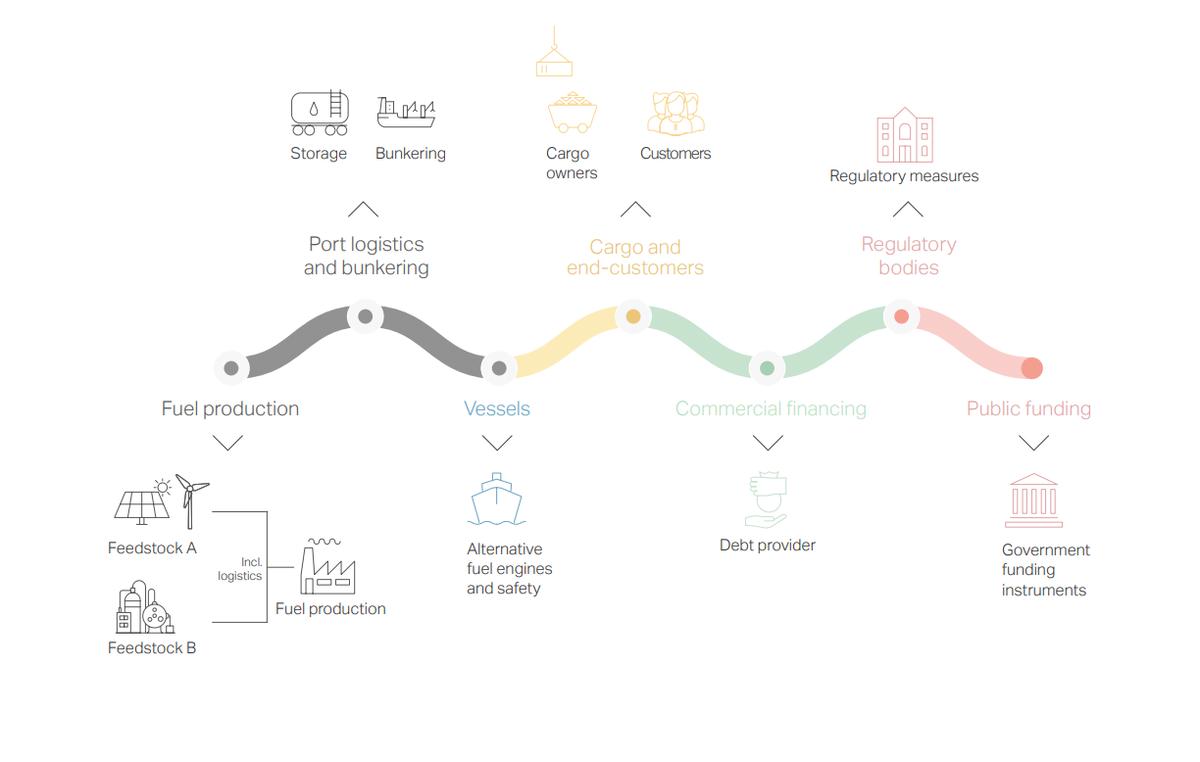MMMCZCS suggests ways to make green shipping corridors successful
The Maersk Mc-Kinney Moller Center for Zero Carbon Shipping (MMMCZCS) has released a research paper suggesting ways to make green shipping corridors projects successful.
 IMAGE: Green shipping corridor projects involve collaboration across the entire value chain. MMMCZCS
IMAGE: Green shipping corridor projects involve collaboration across the entire value chain. MMMCZCS
Green Corridors are maritime routes that actively show the use of low- and zero-emission lifecycle fuels, or other means of low-carbon propulsion like electricity, aiming to attain zero-emissions.
These corridors function as collaborative initiatives involving various stakeholders, like fuel producers, ports, shipowners, etc., working to actualise the decarbonisation of a shipping route.
“Acting as strategic testbeds, green shipping corridors are designed to accelerate the maritime sector's transition to zero-emission operations,” MMMCZCS says.
The research paper highlights the potential of value chain collaboration and its ability to cover cost gaps for green corridors to become operational. “Green shipping corridor projects must be able to cover costs to become operational,” it argues.
These measures include optimized financing, regulation, end-customer green premiums, value chain cost management, and public funding.
According to MMMCZCS:
- Banks and financial institutions can provide optimized financing through better loan terms. That way, projects with clear and measurable sustainability targets are likely to have access to better financing options.
- Governmental bodies can introduce regulations such as CO2 pricing, tax incentives, and “non-competitive measures that can play a vital role in closing the cost gap.”
- Cargo owners and end-customers must pay green premiums for low-carbon transportation. By around 2040 the cargo must carry all the incremental costs.
- Fuel producers can lower costs by aggregating fuel demand with other offtakers, and port infrastructure costs can be shared across multiple corridors.
- Governments must provide public funding, such as grants and direct subsidies, which play a vital role in closing the cost gap.
Notable projects
Projects including the US-South Korea PCTC Green Corridor and the Chile Copper Concentrate Green Corridor, planned to be in operation by 2027 and 2030 respectively, are “characterized by successful value chain collaboration,” MMMCZCS says.
The US-South Korea PCTC Green Corridor between Ulsan and Tacoma ports will use green methanol as the primary fuel, while the Chile Copper Concentrate Green Corridor connecting to the Port of Mejillones uses green ammonia.
“Collaboration is key to maturing green corridor projects, while funding is the critical enabler for moving them from maturation to execution,” MMMCZCS says.
By Aparupa Mazumder
Please get in touch with comments or additional info to news@engine.online





